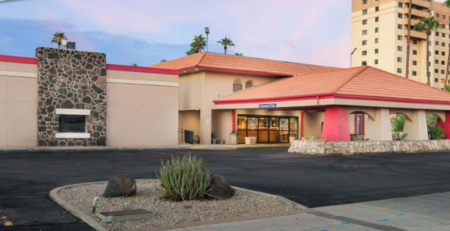Deciphering Syndication Investment Terminology
Deciphering Syndication Investment Terminology
So, you are at the point where you finally received your first Executive Summary (also known as Offering Memorandum) from a syndicator. As you glance through the summary, you will immediately notice that it contains quite a bit of terminology that you either forgot from your college days or may never even heard of before. My post will provide the lay of the land including examples, so that you can walk away with a general understanding of the common terms used in an investment offering.
1. NOI (Net Operating Income) is the difference between Gross Revenue and Operating Expenses. NOI excludes Income Taxes and Debt.
NOI = GR – OE
For example, let’s say Property A generates $12,000 monthly Gross Revenue while its Operating Expenses include the following each month:
• maintenance of $1,000,
• electric of $800,
• water & sewer of $900,
• lawn &/or snow service of $700, and
• property management of $2,600
Now, let’s calculate the NOI based on the formula above.
NOI = 12 * [$12,000 – ($1,000+$800+$900+$700+$2,600)] = $72,000
2. Capitalization Rate (commonly referred to as “Cap Rate”) indicates the potential return on investment.
Cap Rate is calculated as NOI divided by the Purchase Price (Current Market Value of a Property).
Cap Rate = NOI / PP
Cap Rate allows to gauge an initial investment worthiness. However, it is not by any means an indicator that paints a detailed picture of the investment worthiness. The lower the Cap Rate, the lower the risk of the investment and vice versa .
Also, Cap Rate is an indicator of where the market is going. When the Cap Rate is compressing then it entails that the market is heating up .
For example, we purchased a property for $1,000,000 where our NOI for the year is $100,000.
Cap Rate = $100,000 / $1,000,000 = 10%
If we were to purchase this property at another time for $1,800,000, then our cap rate would have been 5.6%
Cap Rate = $100,000 / $1,800,000 = 5.6%
3. Cash on Cash (CoC) Return measures the relationship between cash invested and the actual cash flow, or NOI.
CoC Return measures the annual return on investment, and is determined by proportion of the annual dollar income return and the total amount invested.
COC = NOI / Total Investment
For example, if you invested $100,000 in a syndication and the investment returned $7,000 to you in one year, your CoC Return is 7%.
4. Equity Multiple is defined as the total cash distributions received from an investment, divided by the total equity invested.
Equity Multiple = Total Cash Distributions / Total Equity Invested
For instance, if you invested $100,000 and at the end of term when the asset is disposed, you end up with a total of $218,000, then the Equity Multiple is 2.18x.
Higher Equity Multiple is an indicator of a better return, but keep in mind that it should be reviewed in conjunction with other terms on this list.
5. Average Annual Return is the mathematical average amount of money earned by an investment each year over a given period.
It is calculated as a geometric average to show what an investor would earn over a set time period if the annual return was compounded.
Avg Annual Return = Total Returns Earned / Years of Investment
Here’s an example: Let’s say that you invested $800,000, and the investment earned $460,000 over 4 years. Divide the earning by the 4 years that you’ve held the investment. $115,000 is the average annual return.
Now, if you divide the average annual return of $115,000 by the initial investment amount of $800,000, you will calculate the Average Rate of Return (ARR), equal to 14.38%. The average rate of return is the average annual amount of cash flow generated over the life of an investment.
6. IRR (Internal Rate of Return) is the interest rate at which the net present value of all the cash flows (both positive and negative) from a project or investment equal zero. IRR is used to evaluate the attractiveness of a prospective project or investment. In other words, IRR is a discount rate that makes the Net Present Value (NPV) of all cash flows from a particular project equal to zero. IRR and NPV calculations rely on the same formula.
Generally speaking, the higher a project’s IRR, the more desirable it is to undertake the project. However, just like any other metric must be reviewed in conjunction with other investment metrics on this list. The IRR in real estate investing gives real estate investors the means to compare alternative investments based on their return. Investors that get more money early in the life cycle will have a higher IRR than one that pays off only with a sale in say, 10 years. Here’s a tip; simply use an excel spreadsheet IRR function key to calculate IRR.
7. Preferred Return (aka Pref) is a term used in the world of private equity. Pref refers to the threshold return that limited partners must receive prior to general partners receive their return.
Here’s example #1: The investment dictates 7% preferred return. As a limited partner you invested $100,000. The return for the year is 6.56%, which is less than the Pref of 7%, so you will receive $6,560 for the year.
Here’s example #2: The investment dictates 7% Preferred Return. The distribution split after that is 30% to the GP (General Partner) and 70% to LPs (Limited Partners). As a limited partner you invested $100,000. The return for the year is 9.12%. You will receive $7,000 of Preferred Return for the year as a limited partner. The excess profits will be distributed based on the split of 30% to the GP and 70% to LPs.
8. Waterfall is a method of splitting profits among partners in a transaction that allows for profits to follow an uneven distribution. The waterfall structure can be thought of as a series of thresholds that once achieved, spill over all excess cash into the next threshold.
For instance, the terms of the agreement dictate that LPs will receive 7% Preferred Return, after that the distributions are split to be 30% to GP and 70% to LPs, once 15% is achieved, the excess cash flow is split.
9. Reversion Cap Rate is the Cap Rate that is used to derive reversion value. A benefit that an investor expects to receive as a lump sum at the end of an investment.
10. Property Management Fee is the fee paid to the company that is responsible for managing the property and for day-to-day operations.
11. Asset Management Fee is the fee paid to Sponsor/General Partner responsible for managing the asset overall and for ensuring that the investment is performing as planned. This fee is typically stated below the NOI.
12. Split indicates what percentage of distributions allocated to LPs versus GPs.
13. DSCR (Debt Service Coverage Ratio) is a measure of the cash available to pay current debt (principal plus interest payments). The ratio states net operating income as a multiple of debt obligations due within one year. Banks typically require to have DSCR of at least 1.25.
DSCR = NOI / Annual (Principal +Interest)
Typically, a DSCR greater than 1 means the company has sufficient income to pay its current debt obligations. For example, the company’s NOI is $200,000 and the Debt is $200,000 for the year as well, then
DSCR = $200,000 / $200,000 = 1. This entails there are no additional funds to pay investors or as reserves.
While this list is in no way all inclusive it will give you a good starting point. For more details please refer to my FAQ’s.
Interested in exploring passive investing via syndications
Join The SAMO Club











